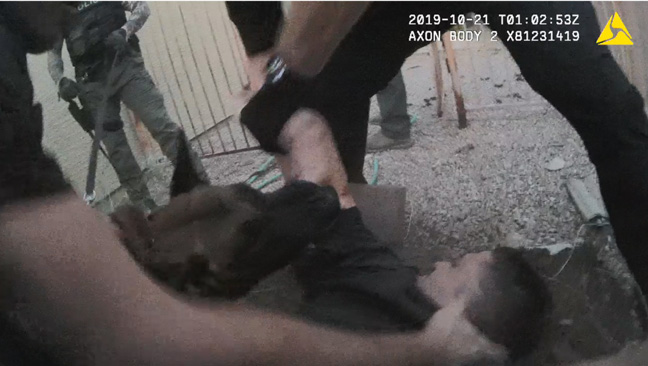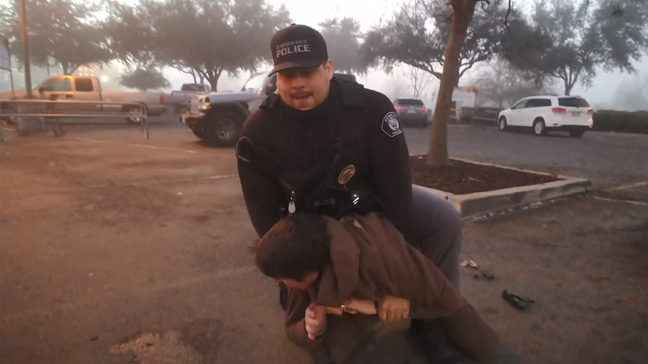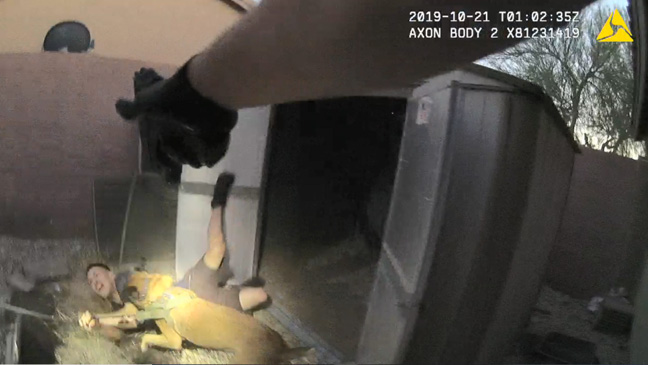Police Brutality Involving Police Dogs

Police dogs and the officers who handle them go through a lengthy testing and training process. The dogs, also known as K9s, are trained to perform many valuable services. K9s are used to detect bombs at airports, search for narcotics at the border and engage in search and rescue missions. However, K9s can also be used as a type of force against criminal suspects. The dogs and their handlers are not always properly trained. Sometimes, a police department’s policy allows for the use of a K9 in an unreasonable manner. Worst of all, officers may intentionally allow a K9 to bite a suspect for too long or when it is not necessary to use a dog at all. This can lead to debilitating injuries, including puncture wounds, lacerations, scars, disfigurement and disability or even death.
In the last 30 years, courts have more frequently acknowledged that the use of police dogs may be excessive force. As the courts have done so, police officers and police departments have been put on notice that the dogs must be properly trained and that these dogs must be used in a reasonable manner. If they are not, the officers are guilty of police brutality.
What Is a Police Dog?
A police dog, or K9, is a dog that has been specially trained to help law enforcement. According to the National Police Dog Foundation, German Shepherds and Belgian Malinois are the most common police dogs. Other dogs, including Bloodhounds and Labrador Retrievers, are also used because of their tracking and detection skills.
K9s can be classified into two groups: patrol and detection. Detection dogs are used to sniff out bombs or narcotics. These dogs are trained to locate one or the other but not both. This is so that the dogs can be as specialized and effective as possible. Patrol dogs, on the other hand, are used to apprehend suspects, protect officers and provide security in sensitive areas such as at airports.
K9 police dogs can also be single or dual purpose. Single purpose K9s are used for either patrol or detection. A single purpose K9 may specialize further and only be used for one duty within the classification of patrol or detection. For example, a detection K9 may focus solely on finding lost persons, tracking or cadaver detection. There are also dual purpose K9s. These are more typical. Dual purpose police dogs can perform all the duties of a single purpose dog, as well as detect explosive or narcotics.
Do Police Dogs Ever Kill or Seriously Injure Anyone?
Absolutely. It is true that like Tasers, K9s can be a less-deadly alternative to firearms. However, a dog bite can result in devastating injuries or death. There is no national database to track police dog bites or the use of police dogs. However, cases across the country have reported K9s causing torn muscles, nerve damage, scars and dangerous infections. Police dogs have been known to damage vocal cords, tear scalps and even rip faces off. Not surprisingly, people sometimes bleed to death and die from the injuries caused by K9s.
When Can the Police Lawfully Use a Police K9?
According to the Supreme Court in Graham v. Connor, all uses of force, deadly or not, must be objectively reasonable under the circumstances. Make no mistake—the use of a police dog against a criminal suspect is a use of force. As a result, if it is not reasonable, the use of the dog is illegal police brutality. This is a violation of a person’s Fourth Amendment rights. As with other uses of force against suspects, determining whether the force was excessive involves balancing the interference with a person’s Fourth Amendment rights against the governmental interests in using the force.
First, the court looks to the intrusion on the suspect’s Fourth Amendment rights. This involves an assessment of the type and amount of force used. Courts have not held that the use of a police dog is generally considered deadly force. However, the Ninth Circuit in Smith v. City of Hemet did leave open the possibility that under certain circumstances, the use of a K9 may be deadly force. At the very least, the use of a K9 is a severe or an intermediate use of force. Deadly force is the only force more severe than intermediate force.
Next, the court determines the government’s interest in the use of force. The court starts by always considering the three Graham factors:
- The severity of the crime
- Whether the suspect presented an immediate threat to the safety of others, including the officers
- Whether the suspect was actively resisting arrest or attempting to flee
Depending on the facts and circumstances of the case, it may be appropriate to consider other factors, including:
- Whether the officer had time to deliberate before using force
- The number of officers present at the scene
- Whether the officer reasonably could have used less intrusive means
- Whether the suspect was under the stress of a mental health issue or emotionally disturbed
- Whether there were innocent bystanders in the area and how many
- Whether warnings, when appropriate, were given
- Whether back-up officers were on the way
- Whether the case involved a domestic disturbance
Mentally ill or disturbed individuals may raise special concerns when the police decide whether to use a K9. A police officer may only use a K9 when it is reasonably necessary, such as to prevent a suspect from harming someone else. But a K9 should not be used simply because a mentally troubled individual is acting agitated and noncompliant.
Finally, in deciding whether the force was excessive, the intrusion on the person’s Fourth Amendment rights (type and amount of force used) is balanced against the governmental interests in using that particular force. Because the standard is one of objective reasonableness, the circumstances of the case determine what level of force is permissible. The subjective intent of the officer does not matter. Further, reasonableness must be judged from the perspective of an officer on the scene—not someone with the vision of hindsight. This is to account for the fact that officers must make quick decisions under tense, rapidly changing and uncertain circumstances.
Are Warnings Required Before Releasing the Police Dog?
No Ninth Circuit court decision has held that warnings are required before deploying a police dog. However, in Deorle v. Rutherford, the Ninth Circuit explained that “warnings should be given, when feasible, if the use of force may result in serious injury.” This applies to any use of force, including K9s.
Whether warnings were given is one factor that courts may consider when determining the reasonableness of using a K9. Most police agencies have a requirement that officers announce their intention to use a K9 whenever time permits. This includes the requirement to make the announcement loudly and clearly and over a public announcement system if available. An example policy from a police department in California is below:
Announce the presence of the canine unit. Order the suspect out of hiding. Warn that a canine will be sent to search and any person in the search area may be bitten. This warning should be loud enough so that it can be heard from anywhere in the search area. Shouting the warning or using a P.A. system should be considered.
The warning shall be made at least twice, and it would be desirable at some point to have the canine bark. Care should be taken to ensure that barking does not obscure any responding voice from the suspect(s). After the warnings are given, the canine handler will wait a sufficient amount of time to allow the suspect to comprehend the warning and comply by making his presence known and surrendering peacefully before using the canine to search. If a suspect is located, the handler shall take steps to prevent the occurrence of unnecessary bites from the canine.
What if My Arrest Was Justified?
You may still have a case even if your arrest was justified. People sometimes think that if the police were allowed to make the arrest, the police cannot be sued for excessive force. However, the question of whether an arrest was proper is separate from the question of whether the force used to make the arrest was excessive.
There are two ways this can be argued in the context of police dogs. For one, the use of a police dog to make the arrest may have been unreasonable. That is, the dog should never have been used at all.
For example, assume an officer observes a person shoplifting in a grocery store. The officer waits to approach the suspect outside the store to avoid a disturbance inside the building. Assume the suspect admits the crime and offers no resistance and does not attempt to flee the scene. The officer could simply handcuff the person, put the suspect in the patrol vehicle and take the person in for booking. However, assume that the officer has a K9 police dog with him or her. Instead of handcuffing the suspect, the officer orders the dog to bite the suspect and bring him or her to the ground before applying the handcuffs. A court would likely view the arrest as justified, but the use of the police K9 as excessive force.
As another example, assume a suspect commits a more serious crime, such as armed robbery. The victim of the robbery calls the police. The police respond and locate the armed suspect who attempts to run and avoid being arrested. Assume the police release a K9, which catches up to the suspect. The K9 bites the suspect and takes him or her to the ground and holds tight until the officer catches up.
Up until this point, the use of the K9 may have been reasonable. However, assume that when the police officer catches up to the suspect, the officer allows the dog to continue to bite the suspect for another minute or two. The suspect is not resisting or hitting the dog but is attempting to fully surrender. Allowing the dog to continue to bite the suspect would likely be considered police brutality. In other words, it would not be the decision to use the K9 that would be police misconduct. Instead, the argument would be that the duration of the bite was excessive force.
Who Can I Hold Responsible for an Attack by a Police Dog?
The most common defendants in a police brutality lawsuit for the use of a K9 are the individual officers involved in the use of the dog. This may be the dog’s “handler,” who directly controlled the dog and decided whether to release the K9. An officer may also be held accountable if he or she failed to intervene to stop an excessive or unnecessary use of a police dog. Additionally, a police officer may be directly liable to the victim of the dog attack if the officer participated in a meaningful way in the use of the dog, even if the officer is not the one who held and released the leash.
A higher-ranking officer, such as a chief of police, may also be held personally responsible for police brutality when a K9 is used. This is because the law allows a supervisor to be held accountable for a lower ranking officer’s use of excessive force. Often, this is done by showing the supervisor failed to properly train the other officers in the use of police dogs. The supervisor may also be liable if he or she knew of past incidents of improper use of K9s and failed to correct the problem through discipline, for example.
The government such as a city or county may also be sued in a police brutality case for the improper use of a K9. One way to make the government accountable is to show the police department had an unconstitutional K9 policy. For example, if the police department had a rule that told officers they were allowed to use a police dog for any crime, no matter how minor, the rule would almost certainly be unlawful.
A similar argument would be that the police department did not have a policy on K9 use that would tell officers when the use of a police dog was permitted. Another way to sue the government would be to argue that the police department did not properly train its officers on how or when to use a police dog to arrest a suspect. This argument would be similar to a lawsuit against a supervisor, as previously mentioned. The difference is that the supervisor would be personally responsible for the harm caused by the dog attack. On the other hand, the government would be directly responsible for any judgment or settlement when the lawsuit is against the city, county, sheriff’s office or police department, for example.
Useful Resources About Law Enforcement Policies on Police Dogs
The following are links to real law enforcement policies on the use of police dogs. The first link specifically addresses K9 use by a police department in California. The second link is to a County Sheriff’s Office Policy Manual. Policy 389, addresses police dogs, which are referred to in the Manual as “canines.” As always, the policies are provided here for informational purposes only.
Police Department Manual of Rules
County Sheriff’s Office Policy Manual
Contact the California Excessive Force Attorneys at Piccuta Law Group
While a police dog may be less deadly than a gun, K9s are powerful animals capable of causing horrific injuries that can lead to disfigurement or even death. Make no mistake, a failure by a police department to provide proper training or the intentional misuse of a police dog by an officer is police misconduct. Police officers sometimes use dogs when it is unreasonable to do so or they may use the dogs in too violent a manner. When this happens, the police can be held responsible for the injuries caused. The police brutality attorneys at Piccuta Law Group have significant experience and a record of success handling police brutality cases, including when a police K9 dog is used. Contact us at (831) 920-3111 for a free consultation or submit an email through our website by filling out the form found on this page. A skilled and experienced police brutality attorney is available now to discuss your case and help determine your right to a recovery.
About the author: The content on this page was written by California civil rights lawyer and Monterey personal injury attorney Charles “Tony” Piccuta. Piccuta graduated with honors from Indiana University-Maurer School of Law in Bloomington, Indiana (Previously Top 35 US News & World Report). Piccuta took and passed the State bars of Arizona, California, Illinois and Nevada (all on the first try). He actively practices throughout California and Arizona. He is a winning trial attorney that regularly handles serious personal injury cases and civil rights lawsuits. He has obtained six and seven figure verdicts in both state and federal court. He has been recognized by Super Lawyers for six years straight. He is AV Rated by Martindale Hubble. He is a member of the Consumer Attorneys of California, American Association for Justice, National Police Accountability Project, Arizona Association of Justice, Maricopa County Bar Association and Scottsdale Bar Association, among other organizations.
Disclaimer: The information on this web site is attorney advertising and is for informational purposes only. It does not constitute legal advice. Reading and relying upon the content on this page does not create an attorney-client relationship. If you are seeking legal advice, you should contact our law firm for a free consultation and to discuss your specific case and issues.



